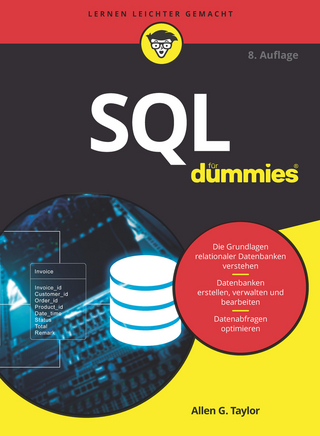
Predator Ecology
Oxford University Press (Verlag)
978-0-19-289551-6 (ISBN)
The functional response also reflects all the behaviors, traits, and strategies that predators use to hunt prey and that prey use to evade predation. It is thus both a clear reflection of past evolution, including predator-prey arms races, and a major force driving the future evolution of both predator and prey. Despite their importance, there have been remarkably few attempts to synthesize or even briefly review functional responses. This novel and accessible book fills this gap, clearly demonstrating their crucial role as the link between individuals, evolution, and community properties, representing a highly-integrated and measurable aspect of ecological function. It provides a clear entry point for students, a refresher for more advanced researchers, and a motivator for future research.
Predator Ecology is an advanced textbook suitable for graduate students and researchers in ecology and evolutionary biology seeking a broad, up-to-date, and authoritative coverage of the field. It will also be of relevance and use to mathematical ecologists, wildlife biologists, and anyone interested in predator-prey interactions.
John P. DeLong is Associate Professor of Biology at the University of Nebraska-Lincoln and the Director of Cedar Point Biological Station. He got his start in predator biology working with migratory raptors in New Mexico, going on to spend 14 years in migration research. Eventually he began studying predatory protists, copepods, mammalian carnivores, and spiders as well. The author has taught a course on Predator Ecology annually since 2013, using the functional response as the core concept of the course. The course provides valuable opportunities for students to estimate functional responses and conduct, in many cases, their first real research. He has published nearly 100 peer-reviewed articles, many involving predators of some kind.
Prologue
1: Introduction
2: The Basics and Origin of Functional Responses Models
3: What Causes Variation in Functional Response Parameters
4: Population Dynamics and the Functional Response
5: Multi-Species Functional Responses
6: Selection on Functional Response Parameters
7: Optimal Foraging
8: Detecting Prey Preferences and Prey Switching
9: Origin of the Tpe III Functional Response
10: Statistical Issues in the Fitting of Functional Responses
11: Challenges for theFuture of Functional Response Research
Epilogue
| Erscheinungsdatum | 24.11.2021 |
|---|---|
| Zusatzinfo | 39 colour line figures and illustrations |
| Verlagsort | Oxford |
| Sprache | englisch |
| Maße | 156 x 235 mm |
| Gewicht | 308 g |
| Themenwelt | Mathematik / Informatik ► Informatik ► Datenbanken |
| Naturwissenschaften ► Biologie ► Evolution | |
| Naturwissenschaften ► Biologie ► Ökologie / Naturschutz | |
| ISBN-10 | 0-19-289551-6 / 0192895516 |
| ISBN-13 | 978-0-19-289551-6 / 9780192895516 |
| Zustand | Neuware |
| Informationen gemäß Produktsicherheitsverordnung (GPSR) | |
| Haben Sie eine Frage zum Produkt? |
aus dem Bereich


